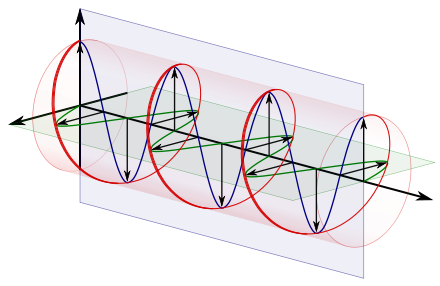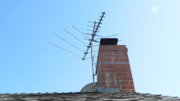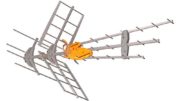I love this job. My favorite part is listening to folks and answering their questions. And when someone asks a question like the one at the top of this article, I love having the opportunity to answer. So what’s the deal? TV antennas tend to be pretty wide. Can you make them take up less visual space by turning them sideways? Would it even work if you did?
The science of broadcasting
You’ve probably heard the term “radio waves.” There’s a lot of heavy-duty physics behind this, but I’m not going to get into that part. I’m just going to say that in its simplest form, all broadcasts can be interpreted as having a wave-like shape, like this:

But what you see above you is an image in two dimensions. In the real world, these waves can travel horizontally (parallel to the ground) or vertically (at 90 degrees to the ground.) Traditionally, TV signals have waves that travel left to right. In fancy electronics terms we refer to that as “horizontally polarized.” Phil Karras contends that a lot of TV broadcasts now use elliptical polarization. Elliptical polarization is a fancy way of saying that the signals travel up and down as well as side to side. In practice this leads to a corkscrew-shaped wave, like this:

There are other articles on the internet that say that many TV stations still use horizontal polarization. I tend to believe Phil, but even so it’s still worth assuming that the station you want to get uses horizontal polarization. Why? Because that’s how life goes…
Why any of this is important
The reason that TV antennas are basically wide and flat is because they’re designed for horizontal waves. Again, there’s a lot of physics which I’m not going to talk about. The upshot is that a metal pole that’s an even fraction of the size of a wave will receive that wave really well. In other words if the wave is 6 feet wide, an antenna 3 feet wide will pick it up well. One that’s 4 feet wide won’t do as well.
This is why antennas like the one at the top of this article look the way they do… they are a series of poles, each perfectly sized to receive a signal of a particular width. Simpler antennas don’t do as good of a job, but often times they do well enough.
Now, to the nitty gritty. A signal that’s horizontally polarized won’t be picked up well at all if you turn your antenna sideways so that the elements run up and down. Why? Because the elements aren’t lined up with the signal. Now, if you are trying to get an elliptically polarized signal, you can turn the antenna on pretty much any angle you want. But as I said, chances are the one channel you want to get will be horizontally polarized only.
Wrapping this up
I don’t recommend turning an antenna sideways. If you want to try it, who knows… it might work. But it might not. If you need a powerful compact antenna, you’re much better off shopping for what you need from Solid Signal.




